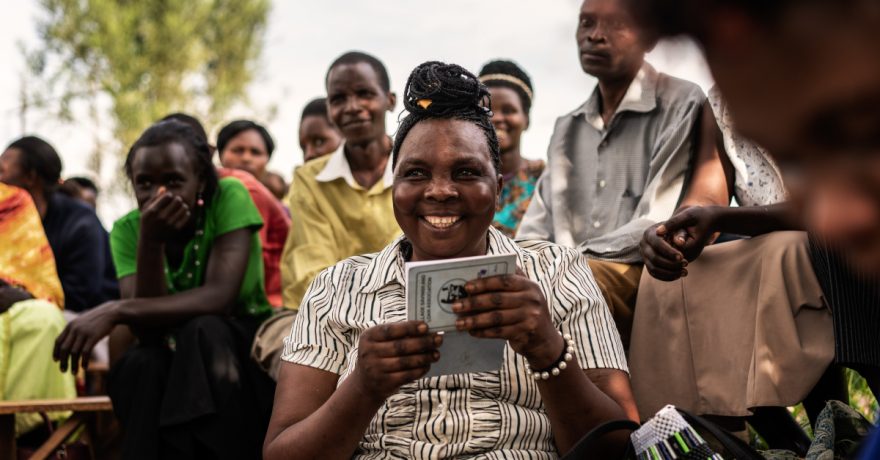The Women’s Bank saving groups hold a capital of a million euros

2019 was the most successful year for Women’s Bank yet, not only in terms of fundraising, but the projects gained impressive results too. The raised funds promoted the livelihoods and entrepreneurship of 29,800 women in six countries in Asia, Africa and the Middle East. When families are included, Women’s Bank benefitted the lives of 150,000 people in 2019.
Saving and loan groups are made of 20-30 women, whereas cooperatives have hundreds of members. In 2019, Women’s Bank supported 452 saving and loan groups with over 17,000 members in total, and 20 cooperatives in Nepal with 6,175 members. The women have saved a capital of over a million euros that was being used as loans with reasonable interest rates to accelerate women’s income generation and the entire local economy. 10,400 women took out a loan in 2019. The smallest loans were only of a few euros, whereas the largest loans provided by cooperatives stood at thousands of euros. Some women benefit far more from saving, enabling them to save money for their children’s schooling, for example.
In addition, women had the opportunity to participate in training courses. When saving and loan activities commence, all the members are given training in finance: budget planning and saving and debt management. Those interested in entrepreneurship participate in entrepreneurship training, and are often provided with a consultation at the beginning of their business operations. Many improve their vocational skills too: knowledge of farming methods and raising livestock. Some adopt a new vocation entirely. In 2019, over 5,200 women developed their entrepreneurial or vocational skills with support from Women’s Bank.
Nearly 3,700 new businesses were founded in 2019. Most of them operate unofficially, meaning that they are not registered, a common practice in these countries. Businesses operate mostly in trade and services: e.g. a daily goods store, a kiosk, or a lunch diner operating close to home. In urban areas, the new businesses represent a wider spectrum of fields: specialty stores and services; production of shoes, cosmetics, account books or a small clothing range.
More common than becoming an entrepreneur, is earning extra income through utilising newly acquired skills in further processing or selling of the farm’s products. Over 9,000 women reported such income. In rural areas, it is more common for women to co-own businesses rather than become solo entrepreneurs. When farmers work together, the growth in the production volumes allows an economy of scale. Joint procurements are cheaper, and greater production volumes interest bigger buyers, bringing independency from local markets. Women’s Bank supported 25 women’s agricultural cooperatives in Nepal and Cambodia that have boosted production and sales beyond the producers’ groups.
One of Women’s Bank’s goals is to strengthen women’s often subordinate position in their communities. Self-reliant income generation, awareness of one’s rights, working together, and the increased sense of participation that comes with it, are important factors in achieving that goal. The results from the project evaluations of eight Women’s Bank projects confirmed that the projects have indeed increased women’s participation in their communities’ activities and strengthened their position in decision-making.
The change has not gone unnoticed by the new generation. An empowered mother is the best possible role model, according to the children themselves.
